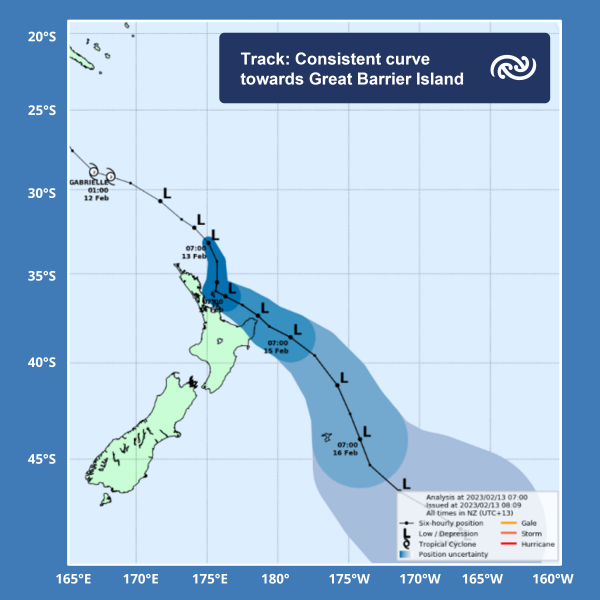References
- Quinn R. There are more than 3000 injury claims from this year's severe storms, according to the latest figures from ACC. RNZ 2023;(9 April). https://www.rnz.co.nz/news/national/487589/more-than-3000-injury-claims-from-this-year-s-storms-acc-data
- Kerr J, Thomson G, Wilson N. Cyclone Gabrielle joins list of Aotearoa NZ’s ‘sudden mass fatality events’. Public Health Expert Briefing 2023;(28 March). https://www.phcc.org.nz/briefing/cyclone-gabrielle-joins-list-aotearoa-nzs-sudden-mass-fatality-events
- Wilson N, Chambers T, Prickett M, et al. Water infrastructure failures from Cyclone Gabrielle show low resilience to climate change. Public Health Expert Briefing 2023;(25 May). https://www.phcc.org.nz/briefing/water-infrastructure-failures-cyclone-gabrielle-show-low-resilience-climate-change.
- Coughlan T. Budget 2023: Chris Hipkins torpedoes capital gain tax, Cyclone Gabrielle response levy. NZ Herald 2023;(27 April). https://www.nzherald.co.nz/nz/politics/watch-live-chris-hipkins-torpedoes-tax-speculation/PPPYNGLUFRBORLILDEJC22LWQA/.
- Woo G. Downward counterfactual search for extreme events. Frontiers in Earth Science 2019;7:340.
- Barach P, Small SD. Reporting and preventing medical mishaps: lessons from non-medical near miss reporting systems. BMJ 2000;320(7237):759-63.
- Madsen P, Dillon RL, Tinsley CH. Airline safety improvement through experience with near‐misses: A cautionary tale. Risk Analysis 2016;36(5):1054-66.
- Kitchin T. Chaos on the Cook Strait. Radio NZ 2023;(21 April). https://www.rnz.co.nz/programmes/the-detail/story/2018886886/chaos-on-the-cook-strait.
- Murray L. Tropical Cyclone Gabrielle – Event summary February 2023. MetService Blog 2023;(1 May). https://blog.metservice.com/TropicalCycloneGabrielleSummary.
- NIWA. NZ Historic Weather Events Catalogue: March 1988 North Island Ex-tropical Cyclone Bola (1988-03-06). https://hwe.niwa.co.nz/event/March_1988_North_Island_Ex-tropical_Cyclone_Bola
- NIWA. NZ Historic Weather Events Catalogue: April 1968 New Zealand Ex-tropical Cyclone Giselle (1968-04-09). https://hwe.niwa.co.nz/event/April_1968_New_Zealand_Ex-tropical_Cyclone_Giselle.
- NIWA. NZ Historic Weather Events Catalogue: February 1936 North Island Ex-tropical Cyclone (1936-02-01). https://hwe.niwa.co.nz/event/February_1936_North_Island_Ex-tropical_Cyclone.
- Wilson N, Morales A, Guy N, et al. Marked decline of sudden mass fatality events in New Zealand 1900 to 2015: the basic epidemiology. Australian and New Zealand Journal of Public Health 2017;41(3):275-79.
- Wilson N, Thomson G. Mass shooting in Christchurch and the epidemiology of sudden mass fatality events in New Zealand. N Z Med J 2019;132(1494):68-70.
- Donnell H. Radio hosts fixate on schools closing as Gabrielle closes in. Radio NZ 2023;(19 February). https://www.rnz.co.nz/national/programmes/mediawatch/audio/2018878253/radio-hosts-fixate-on-schools-closing-as-gabrielle-closes-in.
- Brettkelly S. How we plan for New Zealand's next big disaster. Radio NZ 2023;(20 April). https://www.rnz.co.nz/programmes/the-detail/story/2018886701/how-we-plan-for-new-zealand-s-next-big-disaster.
- Bush International Consulting. Auckland Flood Response Review. March 2023. https://ourauckland.aucklandcouncil.govt.nz/media/je3potln/auckland-flood-response-review_january-27-29-2023.pdf.
- Cook C. NZ Defence Force ongoing staff shortage affected Cyclone Gabrielle response. Radio NZ 2023;(3 April). https://www.rnz.co.nz/national/programmes/morningreport/audio/2018884377/nz-defence-force-ongoing-staff-shortage-affected-cyclone-gabrielle-response.
- IPCC. Synthesis Report Of The IPCC Sixth Assessment Report (AR6) - Summary for Policymakers. Geneva, Switzerland: Intergovernmental Panel on Climate Change, 2023.
About the Briefing
Public health expert commentary and analysis on the challenges facing Aotearoa New Zealand and evidence-based solutions.
Subscribe

Public Health Expert Briefing
Get the latest insights from the public health research community delivered straight to your inbox for free. Subscribe to stay up to date with the latest research, analysis and commentary from the Public Health Expert Briefing.
